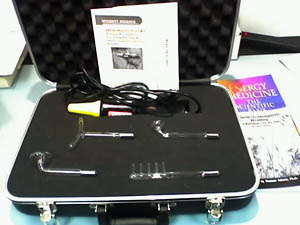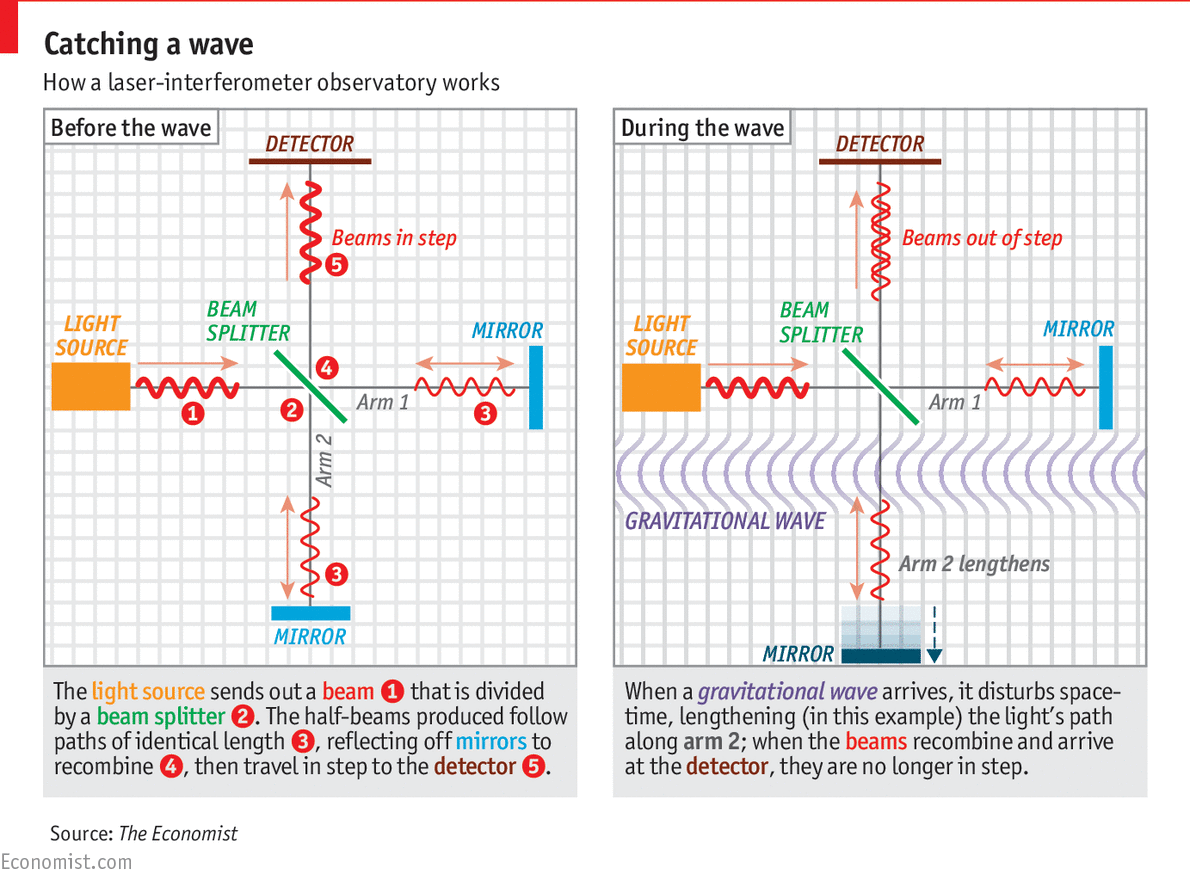|

|
|
|
|
FEBRUARY 2016 
|
With another serious tornado breakout in February
including one tornado that reached 180 mph here in the US, along
with the week-old Fiji cyclone Winston that broke the all-time
record with a speed of 185 mph (300 km per hr), there is little
doubt that thermal forcing of the earth's atmosphere due to
global warming may be a contributor, with more energy going into
weather events. Add to that the corroborating
news last week that the "Seas are Rising at
Fastest Rate in Last 28 Centuries" and expected to reach at
least 3 to 4 feet higher by 2100, it is no wonder that finally
even Bill Gates is reacting (more on that next month). In the
meantime, NY Times just posted a wonderful page on climate change
and what you can do. It may be the best and most complete set of
Q&A on the subject ever published. Hopefully,
all of our readers now have renewed enthusiasm for IRI's dedication
to clean, fuel-free future energy and propulsion!
How about "Zero Net Energy Buildings" to get things
into the real future of energy? Well, the expert Marc Rosenbaum
will be teaching another 10
week course on this topic starting March 9th and you
can listen to the first lecture from the course for FREE!
As to future energy, IRI readers already know that the US has
perhaps the most unused available quantity of geothermal energy
in the world. Kenya for example generates 50% of its electricity
from geothermal! If we have your attention by now, then you may
be interested in getting the latest info from the Wednesday,
March 16, 2016, 2:00 pm - 3:30 pm, Geothermal Energy Association
and EESI who are hosting a five scientist panel discussion, in
only 90 minutes at 212-10 Capitol Visitor Center (Senate-Side),
on East Capitol Street and 1st Street, NE, Washington DC, which
is Free and open to the public. Also, A live webcast will
be streamed at 2:00 PM EDT (wireless connection permitting).
For those interested in space and future propulsion, check out
the 54th Robert H. Goddard Memorial Symposium with the
theme, "Leadership for Space: Opportunities and
Challenges", March 8-10, 2016 at the Greenbelt Marriott /
Greenbelt, Maryland. More information at www.astronautical.org.
Our Story #1 reflects our
growing interest in how energy harvesting will meet IRI's goal of
fuel-free energy. With a title of "Energy Independent
Vehicles for Land and Sea", we are even seeing the phrase
"free power" in the article. The latest research
includes boosts in efficiency and of course, energy harvesting,
and vertical wind turbines that don't impede forward movement of
these vehicles.
Story #2 reports on quite possibly the most amazing discovery of
this century: the detection of gravitational waves. With a
release of energy from two colliding black holes in a short
period that exceeded all of the light energy from the known
universe, we are happy to publish the BEST diagram in print of
the experiment. IRI hopes that this verification of Einstein will
also bring us a little closer to a better future understanding of
how to use, shield, and manipulate gravity as well.
Story #3 produces the next chink in the armor of the second law
of thermodynamics with some sneaky physicists figuring out a way
to create the world's first "photonic Maxwell demon".
For those nonspecialists, Maxwell's demon is a hypothetical demon
who grabs the right particle or photon at the middle of a
rectifier for example and sends the right ones in the correct
direction to produce energy from random nothingness. Now the
University of Oxford has performed and published an experiment
that accomplishes the demon's task with enough energy imbalance
to produce an electric current. We may see an energy breakthrough
soon after all.
Story #4 is the outcome of an R&D investment by one of our
Advisory Board members which vastly extends the life of an LED
lantern. It is a breakthrough in portable lighting and phone
charging that may even be suitable for the Power Africa Project.
Presently on Kickstarter, it includes a replaceable PowerRod
which maintains its output even as it is consumed by the energy
cell. Nice video at the "Read More" link.
Story #5 may end up on the IRI homepage since 17 state governors
have just drafted such a forward-thinking "Governors Accord
for a New Energy Future" that is as if our staff members
helped write the text directed to finding new energy solutions.
Check out the short, signed agreement which aligns with what our
institute has been advocating for the past two decades. Seventeen
governors now agree this is our best hope for our
energy future:
This month, we have also added a sixth story at the end for
energy engineers who may have heard about solid state
thermoelectric converters which used to be very inefficient.
Dubbed the "Seebeck
Effect", two dissimilar metals have been used for
years to generate electricity from heat, including in most home
thermostats since they are so reliable. However, now a technical
article explains how to make their efficiency optimum.
Lastly, don't forget to register for our Eighth Conference on
Future Energy www.futurenergy.org where
you can learn about all of the above topics dedicated to our
energy future, at COFE8. All of our speakers are listed online
and registration is now open. (IRI was the first organization to
publicize the "future energy" concept in 1999 with our
first COFE.) IRI Members get 10% off too.
|
|
|
Our Best Selling nano
second PEMFdevice
|
|
|
Our most
popular HIgh voltage device
|
|
|
|
Best NanoSecond PEMF for
arthritis, bone issues
|
|
|
|
1) Energy Independent Vehicles
for Land and Sea
|
|
By
Dr. Peter Harrop
Energy Harvesting
Journal, February 12, 2016
Markets and key technologies including extreme
powertrain efficiency, energy harvesting and lightweighting.
Formula One is significant in two ways. It is a major
business in its own right at approaching $14bn and it pioneers
vital new technologies in a car or bus near you from the disk
brake to the flywheel kinetic energy recovery system and the
supercapacitor hybrid powertrain.
Dr Peter Harrop of analysts
IDTechEx says, "Paradoxically,
those fearsome Formula One machines burning the rubber lead us to
a safer, less polluting, more economical future. In exactly the
same way, the new energy independent electric vehicles (EIVs) are
starting to be both a substantial business and a creator of new
technology for regular vehicles. Think of the solar aircraft
up for five years and boats circumnavigating the world on sunshine
alone. Less well known are Chinese microbuses with no battery but
extended super-efficient solar cells. These little buses only
work in daylight but they are super- green".
New announcements come thick
and fast. One is a seagoing boat with a large rotating vertical
wind turbine, with straight vertical blades that safer and more
powerful than any scale up of the small propeller types typically
seen on sailing yachts. Developer Inergy declares, "Would
70kW of free power at a 40+% net capacity factor be useful? The
time for serious on-board wind power. Why?
- It is quiet and slow
(30rpm max operating speed)
- Its blade path of rotation
is never toward the vessel, but around it It is among the
most efficient turbines in the world (Cp > 50%)
- When turned off, it has
the lowest overturning moment loads of any turbine The
rotor/nacelle mass is low relative to other turbine designs
Imagine a sailboat that stores
the wind while at anchor, or a sailboat that looks and functions
more like a traditional powerboat. How about a powerboat that has
unlimited range and time cruising without refueling? Imagine the
possibilities!
The subject is fully covered in
new IDTechEx reports, the overview Energy Independent Vehicles
2016-2026 and the drill down on technology called Energy
Independent Electric Vehicle Technology Roadmap 2016-2036 .
They reveal how electric vehicles that never need refuelling,
plugging in or contactlessly charging are now on general sale,
with many more to come and more efficient motors, aerodynamics
and solar cells are among the early advances. Some solar vehicles
even move their ultra efficient solar cells to track the sun.
Parameters and technology trends such as multiple energy
harvesting and regeneration are explained and predicted.
This goes way beyond solar
power as boats capture wind, waves and tide and some land
vehicles also capture wind energy using on-board equipment.
Aircraft capture thermals to generate electricity.
This unique report explains the
existing and future key enabling technologies of land, water and
airborne EIVs, notably harvesting of ambient energy, extreme
lightweighting, future streamlining and powertrain
efficiency.
45 EIVs and projects intended
to lead to EIVs are profiled, identifying business opportunities
such as the new types of photovoltaics and batteries coming in
and where this is taking place. It is demonstrated that interest
and achievement is fairly evenly split between land, water and air
vehicles and the extremely broad variety of missions performed is
identified. Which countries are in the lead and what comes next
across the world is revealed.
Presented as slide format
packed with new analysis and infographics, it has a profusion of
pictures, new comparison tables and the roadmap of technology
improvement. This is understood in the context of precursors of
EIVs. These include electric vehicles using photovoltaics for
significant range enhancement and mechanically harvesting vehicles
such as sailing boats, balloons and gliders.
Future trends in energy
harvesting are clarified - such e-fibres to produce traction
electricity from rain, wind or sun, and the new conformal,
ultra-thin photovoltaics. There is also appraisal of new types of
energy storage, including supercapacitors and lithium-ion
capacitors and the scope for making them into load-bearing
structures. For sailing boats, the rapid progress in using
propellers that go backwards to generate electricity is
evaluated.
Consideration of lightweighting
even extends to structural electronics where the body of the
vehicle is the electrics and electronics releasing space and
weight and increasing reliability and life. Lightweighting also
includes ships harvesting oncoming waves to rise in the water
reducing drag: there is much more to this subject than first
meets the eye and it is relevant to all vehicles not just the end
game of total energy independence.
Consideration of future
powertrain efficiency includes the effect of multi-mode
regenerative harvesting in the vehicles and the place of
streamlining. EIVs being autonomous is considered as a major
synergy of technologies. The system aspects are also
considered plus the connected and dynamically charged vehicle as
transitional products to EIVs.
Extensive global travel and
interviews by expert multi-lingual analysts in 2015 are the basis
of the research, together with primary investigations and
analysis from unique IDTechEx technology and market databases.
|
|
2) Gravitational Waves Detected
& Linked to Energy
|
|
By The Economist,
Print Edition, February 12, 2016
Signs of black holes merging arrive a century after
Albert Einstein predicted them
TWO black holes circle one
another. Both are about 100km across. One contains 36 times as
much mass as the sun; the other, 29. They are locked in an
orbital dance, a kilometre or so apart, that is accelerating
rapidly to within a whisker of the speed of light. Their event
horizons-the spheres defining their points-of-no-return-touch.
There is a violent wobble as, for an instant, quintillions upon
quintillions of kilograms redistribute themselves. Then there is
calm. In under a second, a larger black hole has been born.
It is, however, a hole that is
less than the sum of its parts. Three suns' worth of mass has
been turned into energy, in the form of gravitational waves:
travelling ripples that stretch and compress space, and thereby
all in their path. During the merger's final fifth of a second,
envisaged in an artist's impression above, the coalescing holes
pumped 50 times more energy into space this way than the whole of
the rest of the universe emitted in light, radio waves, X-rays
and gamma rays combined.grids; pooling buying power to get
cheaper clean-energy vehicles for state fleets; and lobbying the
federal government for more research and development on energy
storage, clean fuels and the electric grid.
And then, 1.3 billion years
later, in September 2015, on a small planet orbiting an
unregarded yellow sun, at facilities known to the planet's
inhabitants as the Advanced Laser Interferometer
Gravitational-wave Observatory (LIGO), the faintest slice of
those waves was caught. That slice, called GW150914 by LIGO's
masters and announced to the world on February 11th, is the first
gravitational wave to be detected directly by human scientists.
It is a triumph that has been a century in the making, opening a
new window onto the universe and giving researchers a means to
peer at hitherto inaccessible happenings, perhaps as far back in
time as the Big Bang.
The idea of gravitational waves
emerged from the general theory of relativity, Albert Einstein's
fundamental exposition of gravity, unveiled almost exactly 100
years before GW150914's discovery. Mass, Einstein realised,
deforms the space and time around itself. Gravity is the effect
of this, the behaviour of objects dutifully moving along the
curves of mass-warped spacetime. It is a simple idea, but the
equations that give it mathematical heft are damnably hard to
solve. Only by making certain approximations can solutions be
found. And one such approximation led Einstein to an odd
prediction: any accelerating mass should make ripples in
spacetime.
Einstein was not happy with
this idea. He would, himself, oscillate like a wave on the
topic-rescinding and remaking his case, arguing for such waves
and then, after redoing the sums, against them. But, while he and
others stretched and squeezed the maths, experimentalists set
about trying to catch the putative waves in the act of stretching
and squeezing matter.
Their problem was that the
expected effect was a transient change in dimensions equivalent
to perhaps a thousandth of the width of a proton in an apparatus
several kilometres across. Indirect proof of gravitational waves'
existence has been found over the years, most notably by
measuring radio emissions from pairs of dead stars called pulsars
that are orbiting one another, and deducing from this how the
distance between them is shrinking as they broadcast gravitational
waves into the cosmos. But the waves themselves proved elusive
until the construction of LIGO.
As its name states, LIGO is an
interferometer. It works by splitting a laser beam in two,
sending the halves to and fro along paths identical in length but
set at right angles to one another, and then looking for
interference patterns when the halves are recombined (see
diagram). If the half-beams' paths are undisturbed, the waves
will arrive at the detector in lock-step. But a passing
gravitational wave will alternately stretch and compress the
half-beams' paths. Those half-beams, now out of step, will then
interfere with each other at the detector in a way that tells of
their experience. The shape of the resulting interference pattern
contains all manner of information about the wave's source,
including what masses were involved and how far away it was.
To make absolutely certain that
what is seen really is a gravitational wave requires taking great
care. First, LIGO is actually two facilities, one in Louisiana
and the other in Washington state. Only something which is
observed almost, but not quite, simultaneously by both could
possibly be a gravitational wave. Secondly, nearly everything in
the interferometers' arms is delicately suspended to isolate it
as far as possible from distant seismic rumblings and the
vibrations of passing traffic.
Moreover, in order to achieve
the required sensitivity, each arm of each interferometer is 4km
long and the half-beam in it is bounced 100 times between the
mirrors at either end of the arm, to amplify any discrepancy when
the half-beams are recombined. Even so, between 2002 when LIGO
opened and 2010, when it was closed for upgrades, nary a wave was
seen.
Those improvements, including
doubling the bulk of the devices' mirrors, suspending them yet
more delicately, and increasing the laser power by a factor of
75, have made Advanced LIGO, as the revamped apparatus is known,
four times as sensitive as the previous incarnation. That extra
sensitivity paid off almost immediately. Indeed, the system's
operators were still kicking its metaphorical tyres and had yet
to begin its official first run when GW150914 turned up, first at
the Louisiana site, and about a hundredth of a second later in
Washington-a difference which places the outburst somewhere in
the sky's southern hemisphere. Since then, the team have been
checking their sums and counting their lucky stars. As they
outline in Physical Review Letters, the likelihood that
the signal was a fluke is infinitesimal.
When one result comes so
quickly, others seem sure to follow-particularly as the four
months of data the experiment went on to gather as part of the
first official run have yet to be analysed fully. A rough
estimate suggests one or two other signals as striking as
GW150914 may lie within them.
For gravitational astronomy,
this is just the beginning. Soon, LIGO will not be alone. By the
end of the year VIRGO, a gravitational-wave observatory in Italy,
should join it in its search. Another is under construction in
Japan and talks are under way to create a fourth, in India. Most
ambitiously, a fifth, orbiting, observatory, the Evolved Laser
Interferometer Space Antenna, or e-LISA, is on the cards. The
first pieces of apparatus designed to test the idea of e-LISA are
already in space.
Together, by jointly forming a
telescope that will permit astronomers to pinpoint whence the
waves come, these devices will open a new vista on the universe.
As technology improves, waves of lower frequency-corresponding to
events involving larger masses-will become detectable.
Eventually, astronomers should be able to peer at the first
380,000 years after the Big Bang, an epoch of history that
remains inaccessible to every other kind of telescope yet
designed.
The real prize, though, lies in
proving Einstein wrong. For all its prescience, the theory of
relativity is known to be incomplete because it is inconsistent
with the other great 20th-century theory of physics, quantum
mechanics. Many physicists suspect that it is in places where
conditions are most extreme-the very places which launch
gravitational waves-that the first chinks in relativity's armour
will be found, and with them a glimpse of a more all-embracing
theory.
Gravitational waves, of which
Einstein remained so uncertain, have provided direct evidence for
black holes, about which he was long uncomfortable, and may yet
yield a peek at the Big Bang, an event he knew his theory was
inadequate to describe. They may now lead to his theory's
unseating. If so, its epitaph will be that in predicting
gravitational waves, it predicted the means of its own demise.
|
|
3) Physicists Create first
Photonic Maxwell Demon
|
|
ByPhys.org February
12, 2016
Maxwell's demon, a hypothetical
being that appears to violate the second law of thermodynamics,
has been widely studied since it was first proposed in 1867 by
James Clerk Maxwell. But most of these studies have been
theoretical, with only a handful of experiments having actually
realized Maxwell's demon.
Now in a new paper, physicists
have reported what they believe is the first photonic
implementation of Maxwell's demon, by showing that measurements
made on two light beams can be used to create an energy imbalance
between the beams, from which work can be extracted. One of the
interesting things about this experiment is that the extracted
work can then be used to charge a battery, providing direct
evidence of the "demon's" activity.
The physicists, Mihai D.
Vidrighin, et al., carried out the experiment at the University
of Oxford and published a paper on their results in a recent
issue of Physical Review Letters.
"Our work shows how
photonics can be used as a platform to investigate the relation
between energy and information," coauthor Oscar Dahlsten, at
the University of Oxford and the London Institute for
Mathematical Sciences, told Phys.org.
In the original thought
experiment, a demon stands between two boxes of gas particles. At
first, the average energy (or speed) of gas molecules in each box
is the same. But the demon can open a tiny door in the wall
between the boxes, measure the energy of each gas particle that
floats toward the door, and only allow high-energy particles to
pass through one way and low-energy particles to pass through the
other way. Over time, one box gains a higher average energy than
the other, which creates a pressure difference. The resulting
pushing force can then be used to do work. It appears as if the
demon has extracted work from the system, even though the system
was initially in equilibrium at a single temperature, in
violation of the second law of thermodynamics.
Over the years, physicists have
resolved this apparent paradox by explaining that, even though
the demon may not do work directly on the system, the demon does
gain information from its measurements. Erasing this information
from the demon's memory requires work, so that overall there can
be no net gain in work.
In the photonic version, the
physicists replaced the boxes of gas particles with two pulses of
light. They implemented the demon using a combination of a
photodetector, which can measure the number of photons from each
pulse, and a feed-forward operation, which like the open door can
escort the brighter beam (with more photons) in one direction and
the dimmer beam (with fewer photons) in the other. The different
beams fall on different photodiodes, which generate an electric
current that goes to a capacitor, but from opposite directions.
If the pulse energies were equal, they would cancel out. But the
imbalance in the pulse energies-and in the resulting
photoelectric charge-is what charges the capacitor.
Journal reference: Physical
Review Letters
|
|
4) Energy Cell Invention on
Kickstarter
|
|
|

|
A breakthrough in portable lighting & portable
phone charging.
- No
replacing batteries
- No
plugging in to outlets
- Bright
LED light anywhere, anytime
- Phone
& portable device charging anywhere
- Powered
by our innovative Salt Water EnergyCell
The Hydra-Light PL-500 Personal Lantern is a
breakthrough personal LED lantern & charger powered by an
incredible technology - the Hydra-Light Salt Water EnergyCell.
Simply add water and a little ordinary table salt for instant
light and DC charging power.
The PL-500 evolved out of our search for a safe,
inexpensive alternative to current portable lighting and charging
products that use replaceable batteries. We set out to make a
lighting product that was compact, portable, safe and
ecologically friendly with extended usage times and lower
operational costs than conventional battery products.
According to the Environmental Protection Agency,
each year Americans throw away more than three billion batteries.
That's about 180,000 tons of batteries, more than 86,000 tons of
which are single use alkalines. Placed end to end these dead
batteries would circle the world at least six times.
Enter the PL-500 - powered by a proprietary Salt
Water EnergyCell. No more replacing and throwing away used-up
batteries. The PL-500 is ideal for camping, emergency lighting or
any situations where light & DC power are needed away from
electrical grids. It works perfectly with seawater, so makes a
great maritime working or emergency light for boating.
Here's how it works: inside the PL-500 is a
removable Salt Water EnergyCell - the EC-250 - that works via the
interaction of a replaceable PowerRod and a proprietary carbon
based membrane. When salt water - an electrolyte - is added, the
reaction between these elements creates an instant and continuous
flow of electricity. As the reaction cycle continues over time,
the PowerRod gradually becomes consumed and slowly shrinks in
size, turning into harmless mineral sediment. When the rod has become
very thin, it is removed and a new one is inserted - which takes
just seconds - making the cell like new and ready to continue
generating power. All that's needed during the lifetime of each
PowerRod is a periodic rinsing out of the mineral sediment and
re-filling with fresh salt water. Unlike conventional batteries,
the power output remains constant and does not decline over the
lifetime of the rods.
The PL-500 also contains internal Li-ion storage
which is continuously trickle-charged to provide quick charging
of phones & handheld devices.
|
|
5) 17 States Sign
"Governors Accord" for a New Energy Future
|
|
By DON
THOMPSON, ASSOCIATED PRESS February 19, 2016
Governors from 17 states said
Tuesday that they will work together to develop cleaner energy
and transportation as they look to lead a national shift to
renewable fuels.
The states vary widely in their
approach and sources of fuel, but the bipartisan group said its
goal is to cooperate on planning and policies.
The pact - known as the
Governors' Accord for a New Energy Future - calls for embracing
new energy solutions to expand the economy and protect the health
of communities and natural resources.
"We believe that this is a
robust driver of economic growth, not a brake on economic
growth," Washington state Gov. Jay Inslee said in a
conference call with reporters.
The governors purposely avoided
mentioning the divisive issue of climate change and instead
concentrated on how states can cooperate, California Gov. Jerry
Brown said.
He said that includes building
more sophisticated, energy-efficient regional electrical grids;
pooling buying power to get cheaper clean-energy vehicles for
state fleets; and lobbying the federal government for more
research and development on energy storage, clean fuels and the
electric grid.
Other participating governors
are from Delaware, Connecticut, Hawaii, Iowa, Massachusetts, Michigan,
Minnesota, New Hampshire, Nevada, New York, Oregon,
Pennsylvania, Rhode Island, Vermont and
Virginia. Senior advisers of the governors expect to meet
soon to discuss the initial steps to meet the goals.
American prosperity has always
depended on embracing new ideas and technologies. By deploying
renewable, cleaner and more efficient energy solutions, we can
make our national economy more productive and resilient.
These technologies help to diversify energy sources that
power our economy and reduce dependence on foreign energy sources
while securing abundant, domestically produced electricity.
Embracing these new energy solutions also modernizes our
infrastructure and transportation systems, decreases air
pollution, and supports the growth of innovative American
companies.
Current challenges also demand
these new energy solutions. Extreme weather events, such as
floods, droughts, wildfires and sea-level rise, can negatively
impact electric reliability and the economy. Embracing new energy
solutions can provide more durable and resilient infrastructure,
and enable economic growth, while protecting the health of our
communities and natural resources. These improvements will help
secure a safe and prosperous future for our country.
We recognize that now is the
time to embrace a bold vision of the nation's energy future.
And to do so, states are once again poised to lead.
We join together, despite unique opportunities and
challenges in each state, to embrace a shared vision of this future:
Our states will diversify
energy generation and expand clean energy sources.
Expanding energy efficiency and
renewable energy in a cost-effective way strengthens our states'
economic productivity, reduces air pollution and avoids energy
waste. Integrating more of these clean energy sources into
our electricity grids can also improve the flexibility and
stability of these grids. Promoting energy savings through
efficiency and conservation programs is the fastest, most
reliable and often cheapest way to meet our energy needs.
Technologies that capture solar, wind, hydroelectric and
geothermal power have become viable and cost-effective to
integrate into our states' energy portfolios. These
technologies are already providing energy to millions of
Americans while reducing energy waste and air pollution. Amidst
decreasing costs of renewable energy, and rapid advances in
efficiency throughout entire energy systems, our states will
diversify our energy portfolios for economic, health and
environmental benefits.
Our states will modernize
energy infrastructure.
Modern distribution and
transmission grids are required to give consumers more control
over their own energy use, increase electricity reliability, and
integrate more renewable energy and energy efficiency
technologies into our energy systems. Electrical grid
improvements, advanced in a cost-effective way, can empower
utilities and consumers to manage electricity flexibly and
efficiently.
Our states will encourage clean
transportation options.
Hundreds of thousands of
electric vehicles, and tens of millions of vehicles using
alternative fuels, are driving on American roads, and fuels such
as natural gas, biofuels and hydrogen are increasingly available
to power vehicles. Supporting automakers' and fueling
companies' market expansion for these new vehicles and fuels
expands consumer choice, lessens dependence on petroleum and
reduces pollution. By supporting needed infrastructure
development, incentives and policies when appropriate, our states
will encourage expanded use of these new technologies.
Our states will plan for this
energy transition.
Given the complexity of
state-wide energy systems and the scale of modernizing these
systems, many states have developed energy plans and strategies
to implement energy improvements. These approaches have
incorporated best practices and lessons-learned from new
technologies, other states' energy policies, consumer programs,
and workforce training efforts. These state-by-state
approaches enable each state to meet benchmarks it sets for
itself in areas such as energy diversification, reduced energy
waste, improved air and water, and economic performance.
Our states will support each other in developing, refining
and implementing these plans through sharing expertise among our
policy experts.
Our states will work together
to make these transformational policy changes.
Our states are already
transforming energy and transportation to be cleaner, more
efficient, and more resilient. Many actions taking place
in one state can be adapted to meet the needs of other states and
scaled across regions. Examples include streamlining siting
of environmentally-desirable infrastructure, setting renewable
and energy efficiency standards, adopting incentives for clean
vehicles and fuels, and diversifying energy portfolios to
integrate peak shaving, efficiency and renewable energy into a
state's energy mix. Building on current efforts, our states
will help each other reach shared energy and transportation
objectives. This collaboration will be advanced through
periodic meetings and technical convenings of our states.
Our states will help secure a
stronger national energy future.
Given the unique energy
portfolio and regulatory framework of each state, Governors are
uniquely positioned to drive lasting improvements to our
country's energy system. Federal agencies lend technical
expertise, provide funding, and enable research and development
that can help our states make energy improvements. In order
to provide effective support, federal agencies must work closely
with states to tailor technical support, funding and research to
the needs of each state and avoid presupposing the best types of
assistance. Strong partnerships among our states and
between our states and the federal government will improve our
country in the decades to come.
|
|
6) Thermoelectric Conversion
Review Article
|
|
By G
Schierning et al., Transl. Mater. Res. 2 (2015)
025001
Ed. Note: Sometimes
our eNews features more technical articles on future
energy for the simple reason that the conclusions are very
progressive and surprising. This is one of those articles. The
only two buzz words you need to recognize are "skutterudites
and half-Heusler compounds" which even I have never heard of
before now. They are apparently destined to replace silicon in
future thermoelectric converters. Short excerpt and conclusions
are below. The article is open access.
Within the last decade, novel
materials concepts and nanotechnology have resulted in a
great of the conversion efficiency of thermoelectric
materials. Despite this, a mass market for thermoelectric
heat-to-electricity conversion is yet to be opened up. One reason
for this is that the transfer of the lab records into
fabrication techniques which enable thermoelectric
generator modules is very challenging. By closing the gap
between record lab values and modules, broad industrial
applications may become feasible.
|
|
If you
enjoy this service, please consider making a donation by
clicking on the button below. We are a 501 (C)3 Non Profit
Institute and your donations are fully deductible to the maximum
allowed by law.
|
|
|
|
|
|

|
|
![]()






















